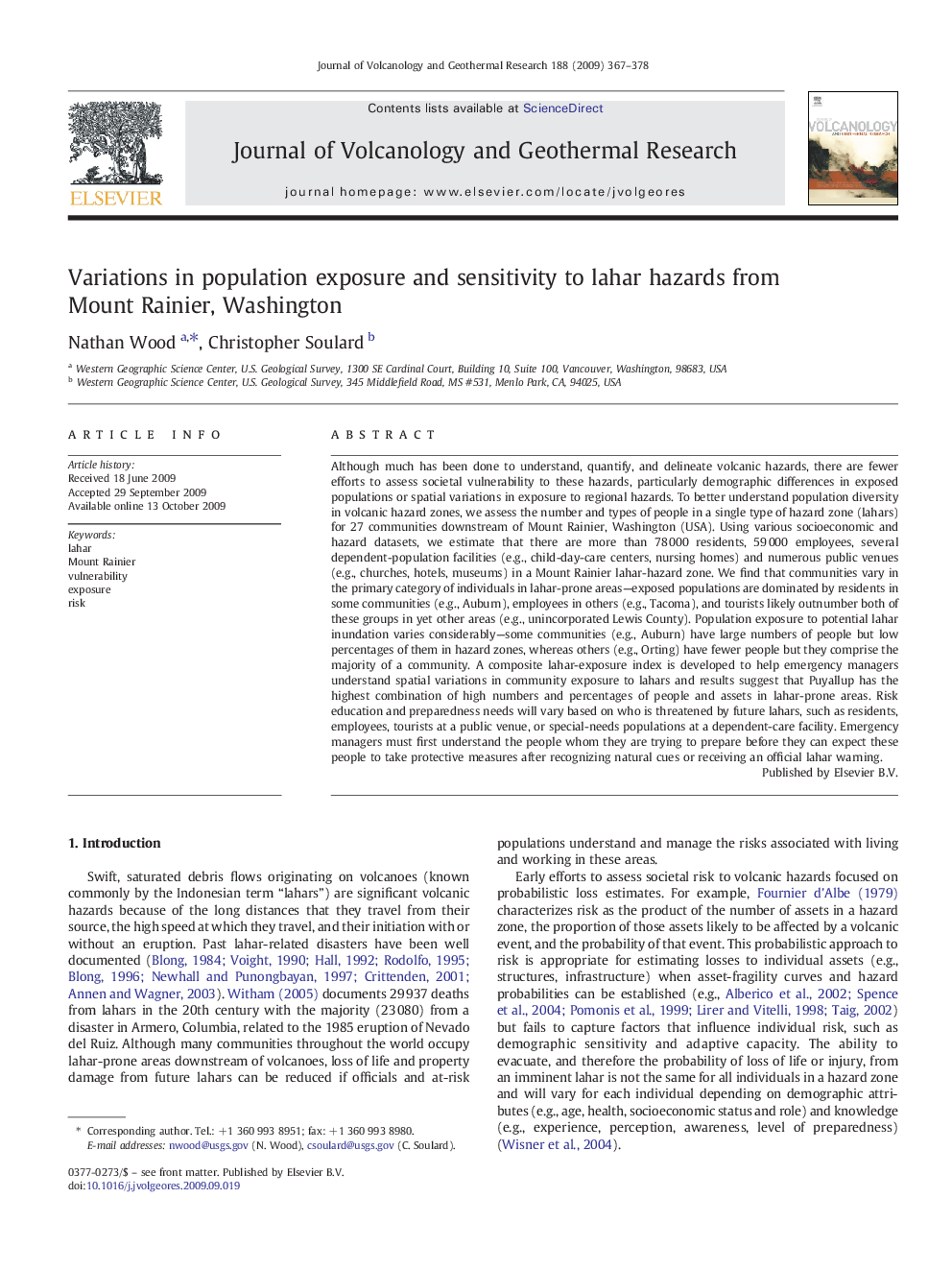| کد مقاله | کد نشریه | سال انتشار | مقاله انگلیسی | نسخه تمام متن |
|---|---|---|---|---|
| 4713140 | 1353859 | 2009 | 12 صفحه PDF | دانلود رایگان |

Although much has been done to understand, quantify, and delineate volcanic hazards, there are fewer efforts to assess societal vulnerability to these hazards, particularly demographic differences in exposed populations or spatial variations in exposure to regional hazards. To better understand population diversity in volcanic hazard zones, we assess the number and types of people in a single type of hazard zone (lahars) for 27 communities downstream of Mount Rainier, Washington (USA). Using various socioeconomic and hazard datasets, we estimate that there are more than 78 000 residents, 59 000 employees, several dependent-population facilities (e.g., child-day-care centers, nursing homes) and numerous public venues (e.g., churches, hotels, museums) in a Mount Rainier lahar-hazard zone. We find that communities vary in the primary category of individuals in lahar-prone areas—exposed populations are dominated by residents in some communities (e.g., Auburn), employees in others (e.g., Tacoma), and tourists likely outnumber both of these groups in yet other areas (e.g., unincorporated Lewis County). Population exposure to potential lahar inundation varies considerably—some communities (e.g., Auburn) have large numbers of people but low percentages of them in hazard zones, whereas others (e.g., Orting) have fewer people but they comprise the majority of a community. A composite lahar-exposure index is developed to help emergency managers understand spatial variations in community exposure to lahars and results suggest that Puyallup has the highest combination of high numbers and percentages of people and assets in lahar-prone areas. Risk education and preparedness needs will vary based on who is threatened by future lahars, such as residents, employees, tourists at a public venue, or special-needs populations at a dependent-care facility. Emergency managers must first understand the people whom they are trying to prepare before they can expect these people to take protective measures after recognizing natural cues or receiving an official lahar warning.
Journal: Journal of Volcanology and Geothermal Research - Volume 188, Issue 4, 15 December 2009, Pages 367–378